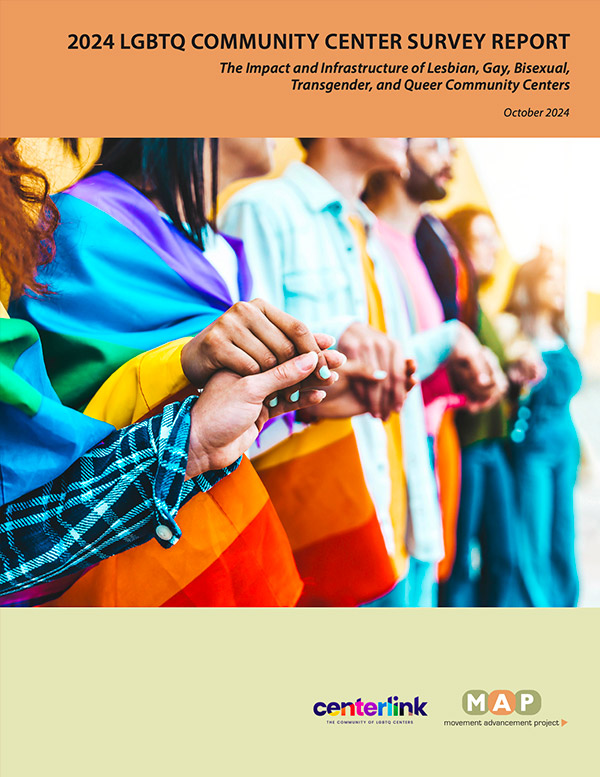The Bottom Line
The 2024 biennial
LGBTQ Community Center Survey Report provides a detailed picture of centers’ staff and boards, program priorities, constituencies and services, infrastructure, fundraising, budgets, and technical assistance needs. The 2024 report finds that local community centers serving LGBTQ people provide vital information, education, and health services to over 58,700 people each week — i.e., more than
3 million people per year.2024 LGBTQ Community Center Survey Report Download 2024 LGBTQ Community Center Survey Report: CyberCenters Download 2024 LGBTQ Community Center Survey Report: Infographics Download 2022 LGBTQ Community Center Survey Report Download 2022 LGBTQ Community Center Survey Report: CyberCenters Download 2022 LGBTQ Community Center Survey Report: Infographics Download 2020 LGBTQ Community Center Survey Report Download 2020 LGBTQ Community Center Survey Report: CyberCenters Download 2020 LGBTQ Community Center Survey Report: Infographics Download 2018 LGBT Community Center Survey Report Download 2018 LGBT Community Center Survey Report: CyberCenters Download 2018 LGBT Community Centers & Advocacy: InfographicDownload 2016 LGBT Community Center Survey Report Download 2016 LGBT Community Center Survey Report: CyberCenters Download 2014 LGBT Community Center Survey Report Download 2014 LGBT Community Center Survey Report: CyberCenters Download 2012 LGBT Community Center Survey Report Download 2010 LGBT Community Center Survey Report Download 2008 LGBT Community Center Survey Report Download
Recommended citation format:
Movement Advancement Project and CenterLink. October 2024.
2024 LGBTQ Community Center Survey Report.
www.mapresearch.org/2024-lgbtq-community-center-survey-report.
Abstract
The 2024 LGBTQ Community Center Survey Report, prepared jointly by MAP and CenterLink and published every two years, provides an overview of local lesbian, gay, bisexual, transgender, and queer (LGBTQ) community centers, including their capacity, their programs and services, the people they serve, and their major challenges and opportunities. This year, the report surveyed 199 centers located in 42 states, the District of Columbia, and Puerto Rico, and provides a crucial snapshot of the centers that provide vital services, programs and advocacy for LGBTQ people. Among the report’s key findings: - Community centers collectively serve over 58,700 people each week, with many centers primarily serving people and communities that are historically under-resourced and under-served, including low-income, people of color, transgender people, and those under the age of 18.
- 66% of LGBTQ community centers directly provide physical health, mental health, and/or anti-violence services or programs—and this number jumps to 95% of centers when including those that provide referrals to LGBTQ-friendly health providers.
- Overall, 73% of LGBTQ centers reported they had experienced anti-LGBTQ threats or harassment over the past two years.
- Nearly all centers (92%) engage in advocacy, public policy, or civic engagement activities, across a wide range of issues and areas, including over half engaging in voter registration efforts. More than one-third of centers listed anti-transgender legislation or other focus areas as their top priority, reflecting the increasingly hostile political and legislative landscape today.
- The staff at LGBTQ centers are diverse, frequently
mirroring the communities they serve. Across
centers that reported this information, a majority of
all center staff (63%) and of all senior staff (52%) are
people of color, while 40% of executive directors are
people of color. Notably, LGBTQ community centers
employ many transgender people, with one in five
(20%) paid staff and 24% of executive directors at
responding centers identifying as transgender.


